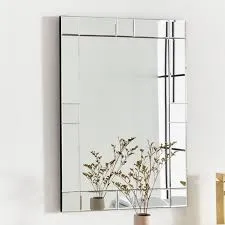

The Cost of Mirror Glass Understanding Pricing Factors and Market Trends
Mirror glass is a highly sought-after material used in various applications, including interior design, architecture, and automotive industries. As consumers and businesses look for reflective surfaces to enhance aesthetics, functionality, and style, understanding the pricing dynamics of mirror glass becomes essential. In this article, we'll explore the elements that influence mirror glass prices, trends in the market, and tips for making informed purchasing decisions.
Factors Influencing Mirror Glass Prices
1. Type of Mirror Glass The price of mirror glass can vary significantly based on the type. Standard flat mirrors, decorative mirrors, and specialized mirrors (such as two-way mirrors used in security applications) each have distinct manufacturing processes and materials, which impact cost. For instance, decorative mirrors with intricate designs or coatings will usually command a higher price than standard wall mirrors.
2. Thickness The thickness of the glass also plays a crucial role in determining price. Thicker glass is more durable and can provide better quality reflections, which is why it typically costs more. For example, a standard 1/4 inch mirror glass will generally be priced lower than a 1/2 inch option.
3. Size Size is a straightforward but critical factor in pricing. Larger sheets of mirror glass require more raw material and more intricate handling during production and transportation, leading to higher prices. Consumers should also consider the cost of installation for larger pieces, as it often requires professional assistance.
4. Finishing and Coating Additional finishes, such as anti-reflective coatings, tinted options, or patterned designs, can increase the price of mirror glass. These finishes not only enhance the aesthetic appeal but also add functional benefits, such as reducing glare or improving energy efficiency in certain environments.
5. Supplier and Brand Different suppliers and brands have varying pricing strategies based on quality perception and market positioning. Premium brands with a reputation for superior quality or innovative designs may charge higher prices, reflecting their brand value.
6. Market Demand and Supply Like any commodity, the pricing of mirror glass is affected by supply and demand dynamics. Market trends can fluctuate based on construction booms, interior design trends, and seasonal demand, which may drive prices up or down. For instance, an increase in home renovations or commercial projects can lead to higher demand, subsequently increasing prices.
Current Market Trends

The market for mirror glass has seen notable trends in recent years. One significant movement is towards eco-friendly and sustainable materials. With consumers becoming more conscious of their environmental footprint, manufacturers are increasingly offering mirrors made from recycled glass and sustainable production practices. These eco-friendly options might come at a premium, reflecting the growing demand for sustainability in construction and design.
Additionally, technological advancements have led to innovative mirror solutions, such as smart mirrors incorporating LED displays and touchscreen technology. These high-tech products tend to carry a higher price tag due to their sophisticated features and the additional electronics involved.
Tips for Purchasing Mirror Glass
1. Determine Your Needs Clearly outline the purpose of the mirror glass you need. Whether it's for decor, practicality, or functionality, knowing your requirements will help you make better decisions.
2. Shop Around Prices can vary widely from one supplier to another, so don't hesitate to compare different options before making a purchase.
3. Check for Quality Consider investing in higher-quality mirror glass, especially if it's for a long-term application. Cheaper options may save money upfront but could lead to disappointment in terms of durability and aesthetic appeal.
4. Consider Installation Costs Larger or more complex mirror glass installations may require professional help. Always factor in installation costs when budgeting for your mirror purchase.
5. Request Samples If possible, request samples or visit showrooms to see the glass quality and finishes firsthand, ensuring that you're satisfied with your choice before making a significant investment.
Conclusion
Understanding the pricing factors associated with mirror glass can help consumers make informed choices. By considering elements such as type, thickness, size, and current market trends, buyers can better navigate the mirror glass market and find the ideal product for their needs and budget. As the industry continues to evolve with new technologies and environmental considerations, keeping abreast of these changes will serve consumers well in their purchasing decisions.